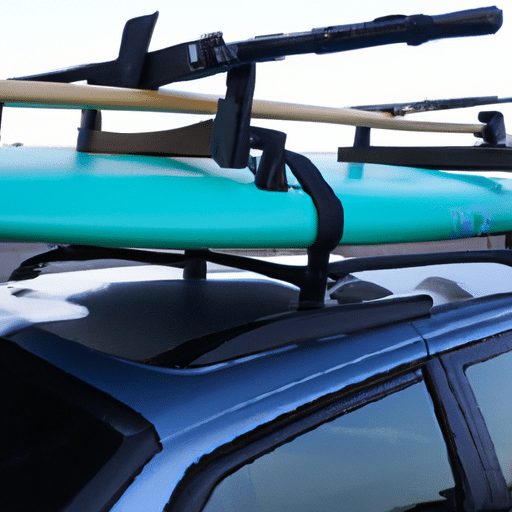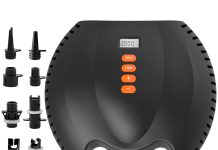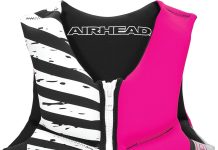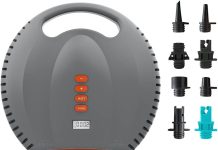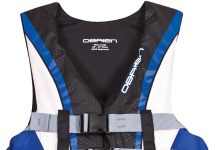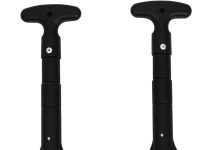Have you ever struggled to load your SUP boards onto a roof rack? If so, you’re not alone. Many outdoor enthusiasts find themselves facing the daunting task of securing their beloved paddleboards to the top of their vehicles. But fear not! In this article, we will uncover the ultimate solution to this dilemma, providing you with the best way to load SUP boards onto a roof rack. So get ready to hit the water with ease and confidence, knowing that your boards are safe and secure for your next adventure.
Choosing the Right Roof Rack
Roof Rack Compatibility
When it comes to choosing a roof rack for your SUP boards, compatibility is key. Before making a purchase, ensure that the rack is compatible with your vehicle. Different vehicles have different roof types and mounting systems, so it’s important to select a rack that can be safely and securely attached to your vehicle. Additionally, consider the weight limit of your vehicle’s roof to ensure that the rack and boards will not exceed the maximum capacity.
Roof Rack Type
There are various types of roof racks available, each catering to different needs and preferences. The most common types of roof racks include crossbar racks, side rail racks, and gutter-mount racks. Crossbar racks are versatile and can be used on a wide range of vehicles, while side rail racks are designed for vehicles with pre-installed side rails. Gutter-mount racks, on the other hand, are suitable for vehicles with rain gutters. Consider your vehicle’s design and your own personal requirements when selecting a roof rack type.
Maximum Weight Capacity
Every roof rack has a maximum weight capacity, which refers to the maximum weight it can safely carry. It is crucial to know the weight of your SUP boards and any additional gear you plan to transport. Make sure that the combined weight of your boards and gear does not exceed the maximum weight capacity of the roof rack. Exceeding this limit can lead to instability and potential damage to both the boards and your vehicle.
Board Size Considerations
Before loading your SUP boards onto a roof rack, consider the size and dimensions of the boards themselves. Some roof racks may have limitations on board length and width, so it’s important to choose a rack that can accommodate your specific board sizes. In addition, consider the number of boards you plan to transport and whether they can be safely stacked on top of each other without causing any damage. Properly fitting the boards on the rack will ensure stability and avoid any potential hazards while on the road.
Preparing the SUP Board for Loading
Clean and Dry the Board
Before loading your SUP boards onto the roof rack, it’s important to clean and dry them thoroughly. Remove any sand, saltwater, or debris from the boards, as these can cause damage over time. Use a mild detergent and water to clean the boards, paying attention to areas with wax or resin build-up. Once cleaned, allow the boards to dry completely before loading them onto the rack. This will prevent any moisture from condensing and potentially causing damage to your boards during transportation.
Remove Fins
To ensure a secure and safe loading process, remove the fins from your SUP boards before placing them on the roof rack. Fins can be delicate and prone to damage during transportation, especially if they are left attached. Removing the fins will also help save space when stacking multiple boards on the rack and prevent any accidental fin-related incidents while loading or unloading.
Secure Loose Items
Before loading your SUP boards, take a moment to secure any loose items that may be on the boards or the vehicle’s roof. This includes removable accessories such as leash cords, carrying handles, or water bottle holders. Secure these items properly or remove them entirely to prevent them from falling or causing damage to the boards or your vehicle during transportation.
Protective Padding
Consider adding protective padding to the roof rack to minimize the risk of damage to your SUP boards. Foam pads or cushioned racks can provide an extra layer of protection and help prevent scratches or dents on the boards’ surfaces. Additionally, use straps or tie-downs with soft padding to secure the boards to the rack, further reducing the chance of damage caused by friction or movement during transit.
Basic Loading Steps
Positioning the Board and Rack
When loading your SUP boards onto the roof rack, start by positioning the rack on your vehicle’s roof. Ensure that the rack is centered and aligned with the vehicle’s frame. This will provide stability and equal weight distribution when the boards are loaded. Once the rack is in place, carefully position the boards on the rack, making sure they are parallel to the vehicle and centered on the rack. Take note of any board size considerations mentioned earlier to ensure a proper fit.
Strapping the Board to the Rack
To secure the SUP board to the roof rack, place the straps over the boards, making sure they are evenly spaced. Depending on the type of roof rack and straps you have, you may need to thread the straps through designated slots or loops. Ensure that the straps are taut and snugly wrapped around the boards to prevent any movement during transit. If loading multiple boards, separate them with foam pads or towels to avoid direct contact and potential damage.
Securing Straps with Buckles
Once the straps are in place, tighten them by pulling on the loose ends. Most straps are equipped with buckles that allow for easy adjustment and tightening. Pull the straps firmly to eliminate any slack, but be careful not to overtighten and cause damage to the boards or the rack. Double-check that the straps are secured and the buckles are properly fastened to ensure a safe and stable load.
Checking Stability
After loading and securing the SUP boards, it’s essential to check the stability of the entire setup. Gently push and pull on the boards to ensure they are securely fastened to the roof rack. Observe any movement or shifting and readjust the straps if necessary. Inspect the rack to ensure it is properly attached to the vehicle and that there are no loose components. Taking the time to double-check the stability will provide peace of mind and help ensure a safe journey.
Loading Multiple SUP Boards
Stacking Boards
When loading multiple SUP boards onto a roof rack, stacking them can be a practical solution. Start by placing the largest board on the rack first, positioning it parallel to the vehicle. Then, place the smaller board on top, ensuring that both boards are centered on the rack. Separate the boards with foam padding or towels to protect them from potential scratches or dents caused by direct contact. Follow the basic loading steps mentioned earlier to securely strap and fasten the stacked boards to the roof rack.
Using Multiple Racks
Another option for loading multiple SUP boards is to use multiple roof racks. This can be particularly useful if you have more than two boards or if the boards are of different sizes. Install and position the additional roof racks on your vehicle, ensuring they are properly aligned and securely mounted. Place the boards on each rack, following the positioning and strapping steps mentioned earlier. It is crucial to distribute the weight evenly across the multiple racks for optimal stability and balance.
Using Board Bags
If you prefer to load multiple SUP boards individually, consider using board bags. Board bags provide protection for the boards while allowing them to be loaded separately on the roof rack. Place each board inside its respective bag, ensuring they are clean and dry beforehand. Position and secure each bagged board on the roof rack using straps or tie-downs, following the basic loading steps for strapping and securing. Board bags can provide an additional layer of protection and make transportation more convenient, especially when traveling with multiple boards.
Balancing the Load
When loading multiple SUP boards onto a roof rack, it’s essential to distribute the weight evenly to maintain balance and stability. Place the boards in a way that evenly distributes the weight across the rack or multiple racks. Avoid placing all the boards on one side, as this can lead to an imbalance and potentially affect the handling and safety of your vehicle. Take extra care to ensure that the load is balanced and secure before embarking on your journey.
Loading SUP Boards Without a Roof Rack
Using Soft Racks
If your vehicle doesn’t have a roof rack or you prefer an alternative option, soft racks can provide a convenient solution for loading SUP boards. Soft racks consist of foam pads, straps, and buckles that can be easily mounted on the roof of your vehicle. Place the foam pads on the roof, parallel to each other and centered on the vehicle. Secure the foam pads by looping the straps through the vehicle’s doors or attachment points, depending on the design of the soft rack. Position the SUP boards on top of the foam pads and secure them using the straps and buckles provided. Ensure that the boards are properly strapped and the soft rack is tightly fastened to the vehicle to prevent any movement or instability during transport.
Using Tie-Down Straps
Tie-down straps can be a useful tool for loading SUP boards onto a vehicle without a roof rack. Before attaching the straps, ensure that there are suitable attachment points on your vehicle. These attachment points may be the vehicle’s frame, tow hooks, or other designated areas designed for securing loads. Loop the straps through the attachment points and adjust their length accordingly. Position the SUP boards on the roof, ensuring that they are parallel to the vehicle and centered. Wrap the straps around the boards and through the attachment points, tightening them to secure the boards in place. Double-check the tightness and stability of the straps before proceeding to ensure a safe transportation experience.
Proper Attachment Points
When loading SUP boards without a roof rack, it’s important to identify and use proper attachment points on your vehicle. These attachment points are designed to withstand the load and stress caused by transporting the boards. Consult your vehicle’s manual or manufacturer’s recommendations to locate the designated attachment points. Avoid using weak or non-structural parts of the vehicle, as they may not be able to withstand the weight or the forces exerted during transit. Always choose sturdy and secure attachment points for the safety of both your boards and your vehicle.
Safety Considerations
When loading SUP boards without a roof rack, it’s crucial to take extra safety precautions. Ensure that the boards are properly secured and fastened, double-checking the tightness of all straps and attachments. Maintain a safe driving speed to minimize the impact of wind resistance and reduce the chances of any sudden movements or shifts. Regularly monitor the boards and attachments during transit, especially during stops, to ensure that everything remains securely in place. It is also advisable to drive with extra caution, taking into consideration the change in vehicle dynamics and increased height caused by the boards. By following these safety considerations, you can transport your SUP boards securely even without a roof rack.
Transporting SUP Boards Safely
Driving Considerations
When transporting SUP boards on a roof rack, it’s important to consider how they may affect your driving experience. The additional height and weight on your vehicle can impact its stability, acceleration, and braking. Be particularly cautious when changing lanes, making turns, or driving on uneven surfaces. Take note of any overhead clearances, such as low bridges or parking garages, to avoid any collisions or damage to your boards. Familiarize yourself with the dimensions and handling characteristics of your loaded vehicle to ensure a safe and smooth journey.
Reducing Wind Resistance
Reducing wind resistance can help improve stability and fuel efficiency when transporting SUP boards on a roof rack. Consider installing wind deflectors or fairings on your vehicle’s roof rack. These devices help redirect airflow and minimize the drag caused by the boards, reducing the strain on your vehicle. Additionally, position the boards on the rack to minimize any overhang beyond the front and rear of the vehicle. This will help reduce wind resistance and maintain a steady ride, especially in windy conditions.
Frequent Checkups
During your journey, make it a habit to regularly check the SUP boards and their attachments. Pull over at safe locations, especially during longer trips, to inspect the straps, buckles, and the overall stability of the boards. Ensure that the boards are properly seated on the rack and that there is no visible movement or shifting. Take the opportunity to tighten any loose straps or attachments and readjust if necessary. By conducting frequent checkups, you can address any potential issues before they escalate and ensure a safe and worry-free transportation experience.
Secure Storage
When you arrive at your destination, it’s important to store your SUP boards securely. Remove the boards from the roof rack and store them in a safe area, away from any potential damage or exposure to harsh elements. If possible, store the boards indoors or use protective covers to shield them from UV rays, dust, or moisture. Proper storage not only keeps your boards safe but also prolongs their lifespan, allowing you to enjoy many adventures on the water in the future.
Unloading SUP Boards
Caution and Awareness
When unloading your SUP boards, exercise caution and be aware of your surroundings. Ensure that you have enough space to safely maneuver the boards off the roof rack. Be mindful of other vehicles, pedestrians, or obstacles that may be nearby. Take note of any wind gusts or uneven surfaces that could affect the stability of the boards while unloading. By maintaining a high level of awareness and taking precautions, you can unload your SUP boards safely and avoid any accidents or damages.
Removing Straps and Buckles
Start by removing the straps and buckles that secure the SUP boards to the roof rack. Loosen the straps gradually and carefully, ensuring that there is no tension or pressure that can cause the boards to move unexpectedly. Gently undo the buckles and remove the straps, taking care not to let them snap back or cause any harm. Store the straps in a safe place for future use and make sure they are not dangling or hanging loosely, as they can become entangled or damaged during the unloading process.
Gently Sliding Board Off
To unload the SUP boards from the roof rack, gently slide them off without any sudden or jerking movements. Place one hand on the board’s surface and the other hand on the rail, guiding it smoothly and gradually toward the ground. Avoid dropping or dragging the board, as this can cause damage to both the board and the ground. Maintain control throughout the unloading process to ensure the safety and integrity of your boards.
Storing the Rack
After unloading your SUP boards, it’s important to properly store the roof rack. Some roof racks can be easily detached and stored separately, while others may remain attached to the vehicle. If the rack is removable, clean it thoroughly and store it in a secure location, such as a garage or shed, to protect it from the elements. If the rack is not removable, ensure that it is clean and in good condition, ready to be used for future adventures. Storing the rack properly will help maintain its longevity and ensure its availability whenever you need it.
Additional Tips and Techniques
Practice Loading Before Each Trip
Loading and unloading SUP boards onto a roof rack can take practice to perfect. Before embarking on each trip, take the time to practice loading and unloading your boards. By doing so, you can familiarize yourself with the process, identify any challenges, and refine your technique. Practice makes perfect, and regular practice will help streamline the loading and unloading process, making it more efficient and enjoyable.
Using Board Socks or Bags
Consider using board socks or bags to provide an additional layer of protection for your SUP boards. Board socks are made from stretchable fabric that snugly fits over the boards, shielding them from scratches, UV rays, and minor impacts. Board bags, on the other hand, offer more comprehensive protection and often feature padded interiors, shoulder straps, and additional pockets for accessories. Using board socks or bags can help prolong the lifespan of your boards and keep them in top condition, even during transportation.
Utilizing Assistive Tools
If you find it challenging to load and unload your SUP boards onto a roof rack, consider utilizing assistive tools. Tools such as lift assist devices or loading mats can make the process easier and more manageable, particularly for individuals with limited strength or mobility. Lift assist devices, such as roller loaders or slide-out systems, can help guide and support the boards onto the rack. Loading mats provide a smooth and low-friction surface, allowing boards to glide effortlessly onto the rack. These tools can be valuable assets, making the loading and unloading process more accessible and efficient.
Adjusting Rack Positions
Depending on your vehicle’s design, you may have the flexibility to adjust the position of the roof racks. Experiment with different rack placements to find the optimal configuration for your SUP boards. Adjusting the rack positions can help accommodate different board sizes, improve weight distribution, and minimize wind resistance. Consider the overall balance and stability of the loaded boards when adjusting the rack positions, as this can significantly impact the performance and safety of your transportation setup.
Safety Guidelines and Precautions
Choosing Suitable Conditions
Before loading your SUP boards onto a roof rack, consider the weather and driving conditions. It is generally preferable to load and transport your boards on days with calm weather and minimal wind. High winds and adverse weather conditions can increase the risk of instability and potential accidents. Additionally, avoid loading and unloading your boards in busy or hectic areas, ensuring there is ample space and safety for both yourself and others. By choosing suitable conditions for loading and transportation, you can reduce the chances of any mishaps and ensure a safe journey.
Lifting Techniques
Proper lifting techniques are essential when handling SUP boards, especially when loading and unloading them onto a roof rack. Bend your knees and keep your back straight while lifting the boards to minimize the strain on your back muscles. Lift with your legs and use the strength of your lower body to support the weight. Avoid twisting or overextending your back, as this can lead to discomfort or injury. If needed, ask for assistance from a friend or use assistive devices to help with the lifting process. Prioritizing good lifting techniques will protect your body from unnecessary strain and ensure safe handling of the boards.
Supervision and Assistance
If you are new to loading and transporting SUP boards on a roof rack, it is highly recommended to have supervision or assistance from someone with experience. Having a knowledgeable person guide you through the process can help ensure that you follow the correct steps and avoid any mistakes that may lead to accidents or damage. Moreover, a helpful observer can provide an extra set of eyes to ensure that everything is securely fastened and properly balanced before hitting the road. Seek guidance and assistance, particularly for your first few attempts, to enhance your understanding and confidence in safely loading and transporting your SUP boards.
Regular Maintenance
To ensure safe and reliable transportation of your SUP boards, it is crucial to regularly inspect and maintain the roof rack, straps, and other associated equipment. Check the rack for any signs of wear and tear, such as rust, loose screws, or damaged components. Replace or repair any faulty or worn-out parts promptly. Inspect the straps for any fraying, cuts, or weakening, and replace them if necessary. By conducting regular maintenance, you can address potential issues early on, minimizing the risk of equipment failure and guaranteeing the safety of your boards and your vehicle.
Considerations for Different Vehicle Types
SUVs and Vans
SUVs and vans often provide ample space for loading SUP boards onto a roof rack. Consider utilizing crossbar racks, side rail racks, or gutter-mount racks depending on your vehicle’s design. As these vehicles tend to have a higher roof height, be cautious when lifting and loading the boards. Utilize assistive tools or ask for assistance to safely and comfortably lift the boards onto the rack. Ensure that the boards are properly secured and there is minimal overhang to reduce wind resistance and maintain stability while driving.
Sedans and Hatchbacks
Sedans and hatchbacks may have a lower roof height, posing a challenge when loading SUP boards onto a roof rack. Opt for crossbar racks or side rail racks that are compatible with your vehicle’s design. When loading the boards, take extra care to lift and position them onto the rack without causing any damage or scratches. Avoid overloading the rack and make sure to check the stability of the boards and their attachments before driving. Be aware of the change in height caused by the boards and adjust your driving accordingly, particularly in urban environments with height restrictions.
Trucks and Pickups
Trucks and pickups offer various options for transporting SUP boards. Consider utilizing a bed rack or a truck rack system specifically designed for carrying boards. These racks can be mounted onto the bed of the truck, providing a secure and easily accessible storage solution. Alternatively, you can also place the boards directly in the bed of the truck, ensuring that they are properly secured to prevent any movement during transit. Pay attention to any height restrictions and utilize caution when driving with the boards, especially when turning or changing lanes.
Compact Cars
Loading SUP boards onto a roof rack of a compact car requires careful consideration due to limited space. Opt for a crossbar rack or a side rail rack that is compatible with your vehicle. Take precise measurements of your board sizes and compare them to the available rack dimensions to ensure a proper fit. Consider loading the boards individually or stacking them, depending on the number of boards and the available space. Prioritize weight distribution and secure the boards tightly to mitigate any potential instability caused by the compact car’s reduced roof area.
In conclusion, safely and effectively loading SUP boards onto a roof rack requires careful consideration of various factors, including roof rack compatibility, type, weight capacity, and board size. Preparing the boards properly by cleaning, removing fins, securing loose items, and adding protective padding is crucial for a safe and damage-free journey. Following the basic loading steps and taking extra care when loading multiple boards or when loading without a roof rack will help ensure stability and security.
It is important to transport SUP boards safely by considering driving conditions, reducing wind resistance, conducting regular checkups, and storing the boards securely. Unloading the boards requires caution, and proper storage of the rack is also essential. Additional tips, safety guidelines, and considerations for different vehicle types provide valuable insights and techniques to enhance the loading and transportation experience. By following these comprehensive guidelines, you can confidently load and transport your SUP boards, ready to embark on your next exciting paddleboarding adventure.
HEYTRIP Roof Rack Pads 30" Aero Crossbar Pads for Kayak/Surfboard/SUP/Canoe with 15FT Tie-Down Straps and Storage Bag
Thule SUP Taxi XT Surfboard Rack
5 used from $300.39
Golkcurx Universal Soft Roof Rack Pads for Kayak,Surfboard, SUP, Canoe, Snowboard with15FT Tie-Down Straps*2 and Storage Bag*1 (Black)
$47.49 in stock
3 used from $44.64
YAKIMA, SUPDawg Rooftop Mounted Stand Up Paddleboard Rack for Vehicles, Carries Up To 2 Boards
1 used from $303.20
INNO INA446 Surf-Wind-Long Board Locking Roof Carrier w/Board Pads - Holds (1) Kayak or (1) Canoe or (2) SUP/Wind/Surf-Boards
$212.49 in stock
MeeFar Universal Car Soft Roof Rack Pads Luggage Carrier System for Kayak Surfboard SUP Canoe Include 2 Heavy Duty Tie Down Straps, 2 Tie Down Rope, 2 Quick Loop Strap and Storage Bag
COR Surf Aero Roof Rack Pad and Premium No-Scratch Cam Buckle Tie Down Straps with Protective Silicone for Surf, SUP, Kayak and Canoe (28" Small Black)
Abahub Soft Roof Rack Pads for Surfboard, SUP, Kayak, Canoe, Heavy Duty Universal Car Roof Racks System for Padle Boards, with 2 Tie Down Straps, 2 Tie Down Ropes, 2 Hood Loops and Storage Bag
Leader Accessories Kayak Rack 2 Pair J Bar for Canoe Surf Board SUP On Roof Top Mount Crossbar with 4 pcs Tie Down Straps
$75.99 in stock

